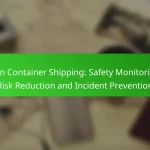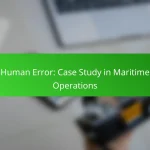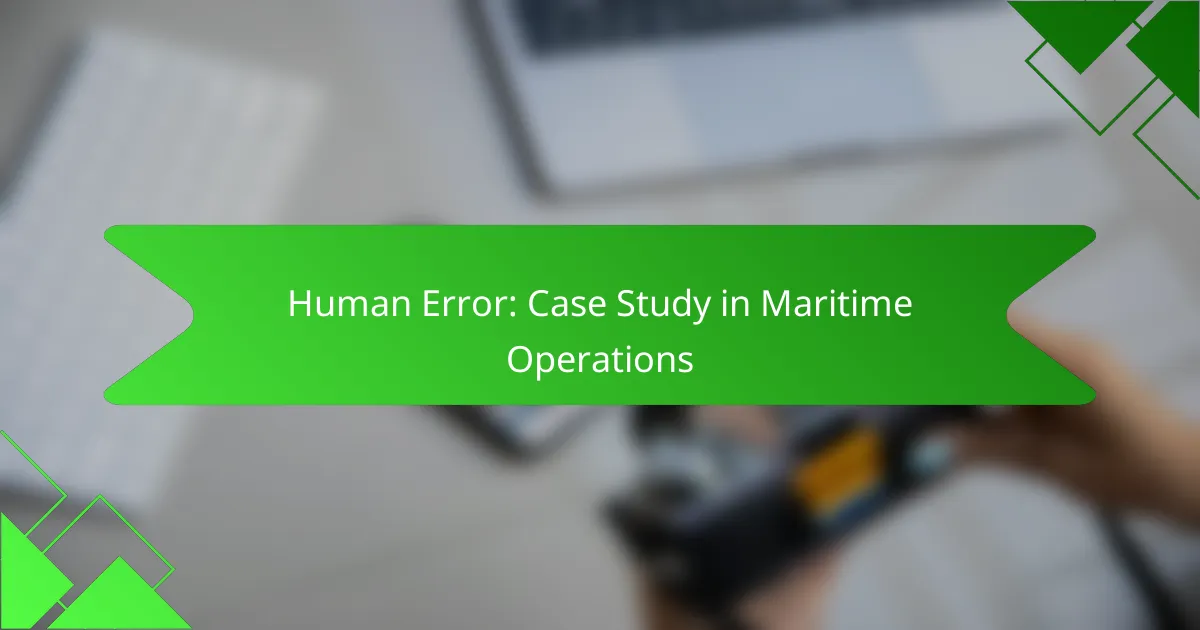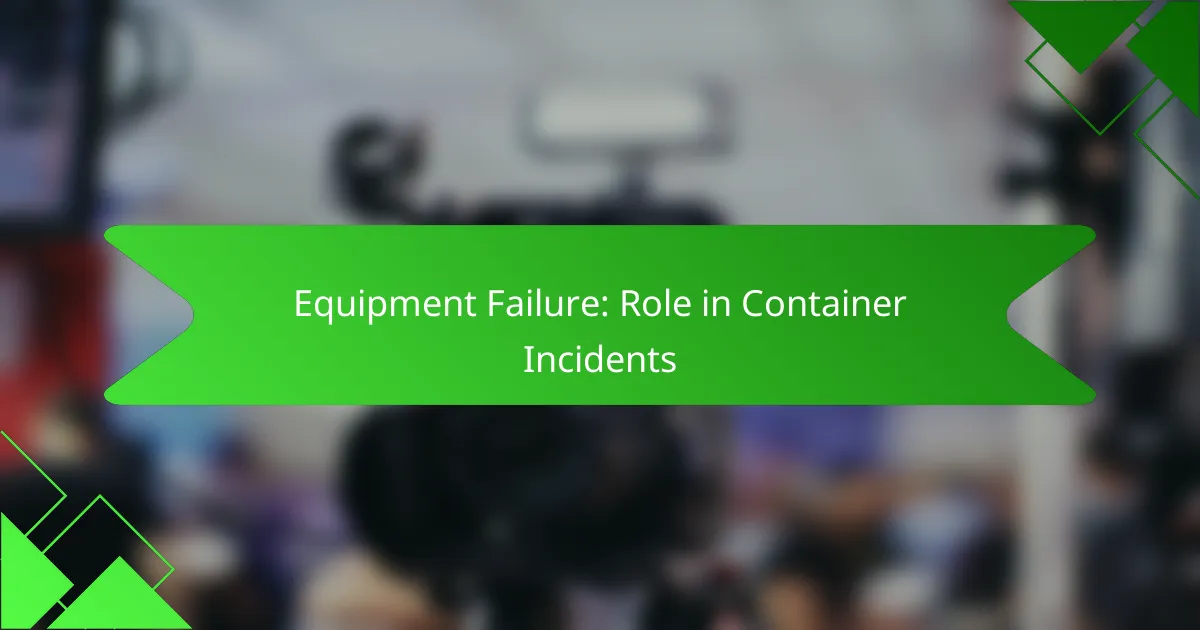Human error remains a critical concern in maritime operations, often stemming from factors such as cognitive overload, poor communication, and inadequate training. By identifying these causes, the maritime industry can implement strategies like advanced training and technology integration to enhance safety and efficiency. Ultimately, addressing human error through effective measures is essential for minimizing risks at sea and ensuring smoother operations.
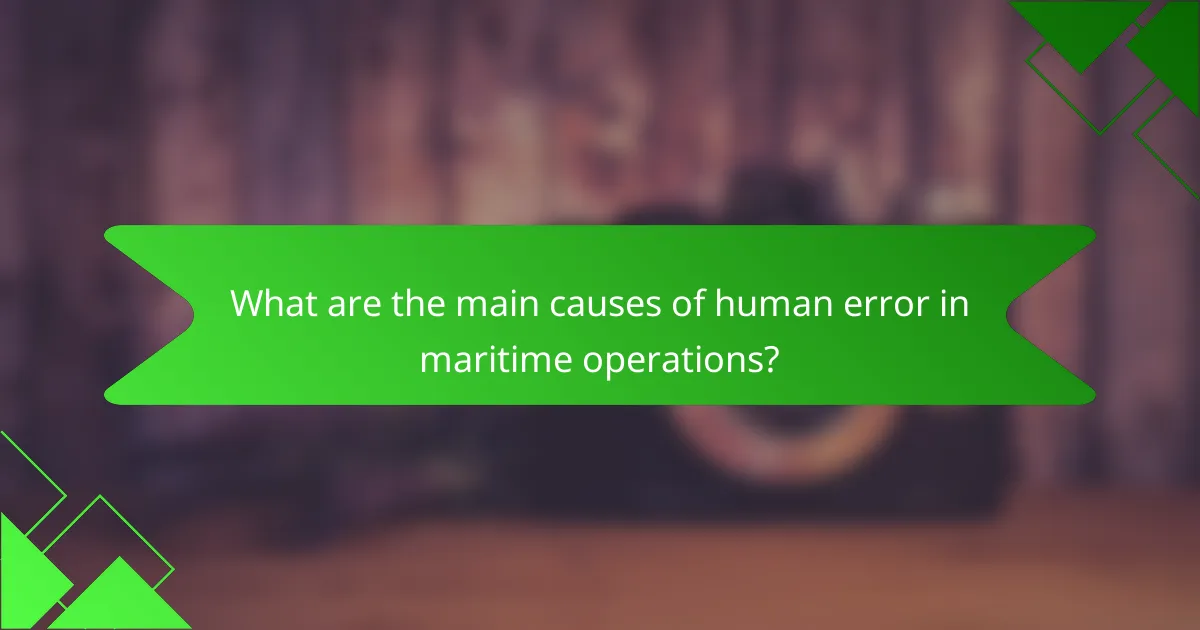
What are the main causes of human error in maritime operations?
The primary causes of human error in maritime operations include cognitive overload, poor communication, inadequate training, environmental factors, and technological limitations. Understanding these causes is essential for improving safety and efficiency in maritime activities.
Cognitive overload
Cognitive overload occurs when crew members are faced with too much information or too many tasks simultaneously, leading to mistakes. For instance, during high-stress situations like navigating through busy ports, the sheer volume of data can overwhelm decision-makers.
To mitigate cognitive overload, it is crucial to prioritize tasks and streamline information. Implementing checklists and using clear visual aids can help crew members focus on critical tasks without becoming overwhelmed.
Poor communication
Poor communication is a significant contributor to human error in maritime operations, often resulting from unclear instructions or misunderstandings among crew members. For example, if a captain fails to convey a change in course effectively, it can lead to navigational errors.
Establishing standardized communication protocols, such as using specific terminology and confirming messages, can enhance clarity. Regular team briefings and debriefings also foster an environment where crew members feel comfortable asking questions.
Inadequate training
Inadequate training can leave crew members unprepared for the complexities of maritime operations, increasing the likelihood of errors. For example, insufficient training on emergency procedures can lead to confusion during critical situations.
To address this issue, organizations should invest in comprehensive training programs that cover both routine operations and emergency scenarios. Regular drills and simulations can reinforce skills and ensure that crew members are well-prepared for various situations.
Environmental factors
Environmental factors, such as adverse weather conditions or challenging sea states, can significantly impact human performance. For instance, heavy fog can reduce visibility, making navigation more difficult and increasing the risk of accidents.
To counteract these challenges, crews should be trained to adapt their operations based on environmental conditions. Utilizing advanced weather forecasting tools and maintaining situational awareness can help mitigate risks associated with environmental factors.
Technological limitations
Technological limitations can lead to human error when systems fail or do not function as intended. For example, outdated navigation equipment may not provide accurate data, leading to poor decision-making.
Regular maintenance and updates of technological systems are essential to minimize errors. Crew members should also be trained to understand the limitations of their equipment and have contingency plans in place for potential failures.
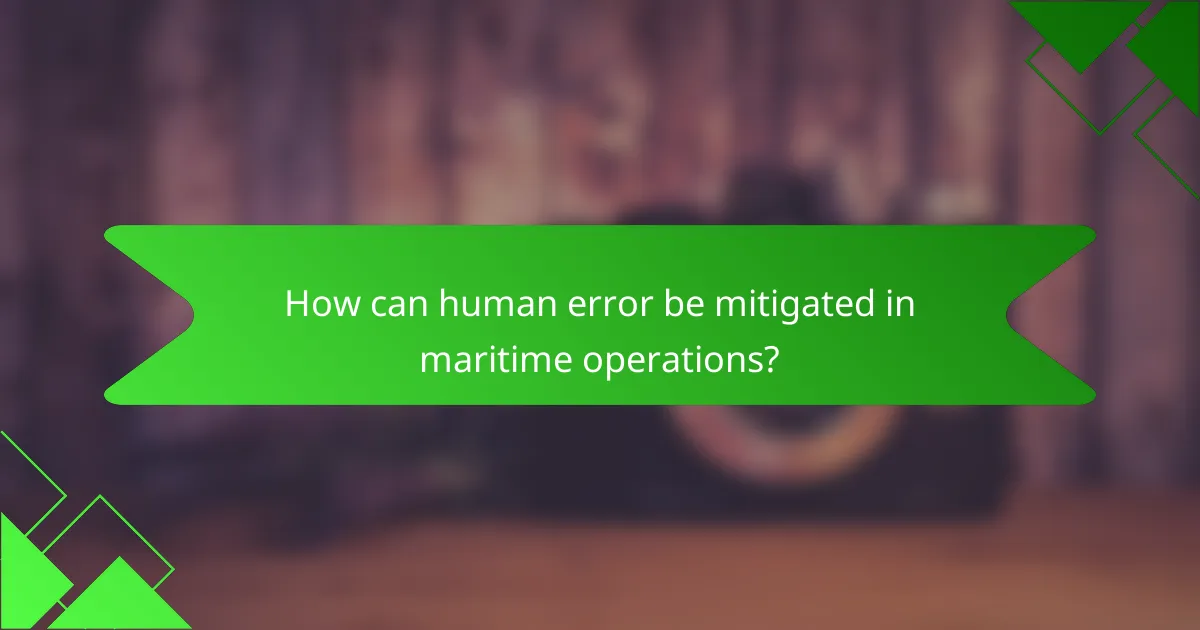
How can human error be mitigated in maritime operations?
Human error in maritime operations can be mitigated through a combination of advanced training, simulation technology, effective communication, and ergonomic design. Implementing these strategies helps reduce mistakes and enhances overall safety at sea.
Implementing advanced training programs
Advanced training programs are essential for equipping maritime personnel with the skills needed to handle complex situations. These programs should include both theoretical knowledge and practical exercises tailored to real-world scenarios encountered at sea.
Regular refresher courses can reinforce critical skills and keep crew members updated on the latest safety protocols and technologies. Incorporating assessments and feedback mechanisms ensures continuous improvement and accountability.
Utilizing simulation technology
Simulation technology plays a crucial role in preparing maritime crews for emergencies without the risks associated with real-life training. High-fidelity simulators can replicate various maritime conditions, allowing crews to practice navigation, communication, and emergency response in a controlled environment.
These simulations can be customized to reflect specific vessels and operational challenges, making training more relevant and effective. Regular use of simulation can significantly enhance decision-making skills under pressure.
Enhancing communication protocols
Clear and effective communication protocols are vital in maritime operations to prevent misunderstandings that can lead to accidents. Establishing standardized communication practices, such as the use of specific terminology and checklists, can help ensure that all crew members are on the same page.
Regular drills that focus on communication during emergencies can improve response times and coordination among crew members. Utilizing technology like radios and intercom systems can further enhance communication efficiency.
Adopting ergonomic design principles
Ergonomic design principles focus on creating work environments that reduce physical strain and cognitive overload for maritime personnel. This includes designing control panels, workstations, and tools that are intuitive and easy to use, minimizing the risk of human error.
Incorporating ergonomic assessments during vessel design and maintenance can lead to significant improvements in crew performance and comfort. Regular feedback from crew members can help identify areas for enhancement and ensure that designs meet their needs effectively.

What role does technology play in reducing human error?
Technology significantly reduces human error in maritime operations by automating tasks, providing real-time insights, and supporting decision-making. These advancements help to minimize the potential for mistakes that can arise from human fatigue, distraction, or misjudgment.
Automation of repetitive tasks
Automation streamlines repetitive tasks such as navigation, engine monitoring, and cargo handling, allowing crew members to focus on more complex responsibilities. By using automated systems, the likelihood of human error decreases, as machines can perform these tasks with greater precision and consistency.
For instance, automated navigation systems can maintain course and speed without the variability introduced by human operators. This can lead to safer and more efficient voyages, particularly in high-traffic or challenging environments.
Real-time data analytics
Real-time data analytics provides crews with immediate insights into vessel performance, environmental conditions, and operational parameters. By continuously analyzing data from various sensors, technology can alert operators to potential issues before they escalate into serious problems.
For example, a system that monitors engine performance can detect anomalies and suggest corrective actions, thereby preventing equipment failure. This proactive approach helps to mitigate risks associated with human oversight.
Decision support systems
Decision support systems enhance the decision-making process by providing relevant data and predictive models to operators. These systems can analyze multiple variables, such as weather forecasts and traffic patterns, to recommend optimal courses of action.
In maritime operations, a decision support tool might suggest alternative routes to avoid adverse weather or congested shipping lanes, allowing crews to make informed choices that prioritize safety and efficiency. Implementing such systems can significantly reduce the cognitive load on operators, leading to better outcomes.
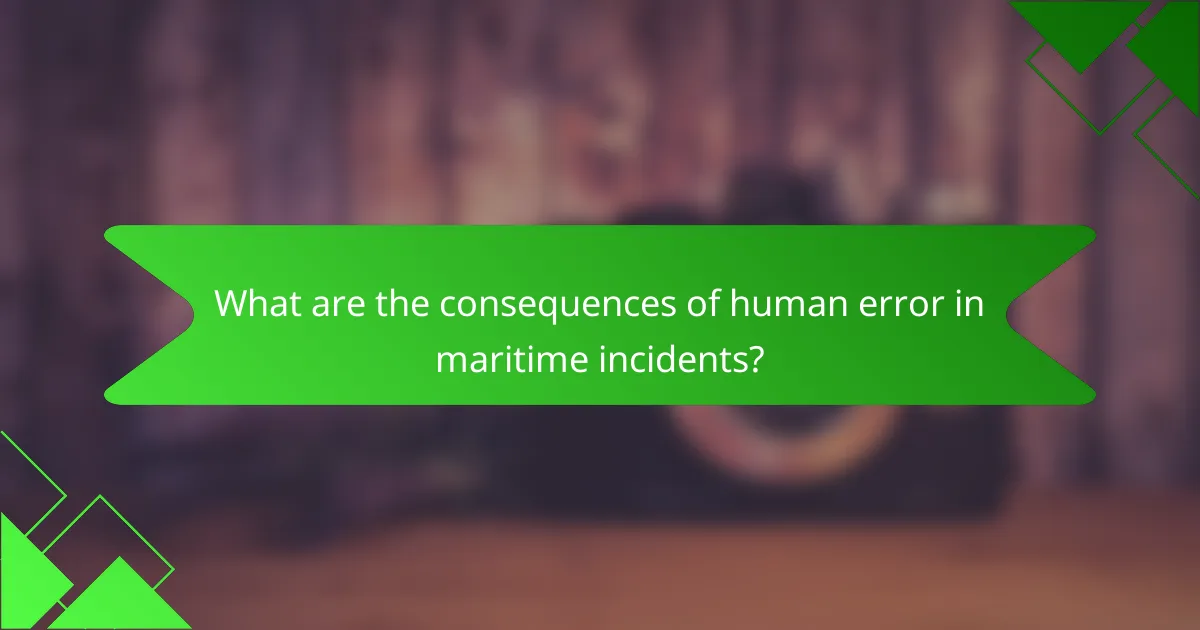
What are the consequences of human error in maritime incidents?
Human error in maritime incidents can lead to severe repercussions, including financial losses, environmental damage, and loss of life. These consequences can ripple through the industry, affecting not only the immediate parties involved but also broader economic and ecological systems.
Financial losses
Financial losses from human error in maritime operations can be substantial. Incidents may lead to costly damages to vessels, cargo, and infrastructure, often running into millions of dollars. Additionally, companies may face increased insurance premiums and legal fees, further straining their finances.
For example, a grounding incident could result in the loss of valuable cargo and necessitate expensive salvage operations. Companies should implement rigorous training and safety protocols to mitigate these risks and protect their financial interests.
Environmental impact
The environmental impact of human error in maritime incidents can be devastating. Oil spills, chemical leaks, and other forms of pollution can harm marine ecosystems, leading to long-term ecological damage. The cleanup costs and restoration efforts can be significant, often requiring years of work and millions of dollars.
For instance, a ship collision that results in a spill can affect local wildlife and fisheries, disrupting the balance of marine life. To minimize environmental risks, operators should adhere to strict regulations and invest in technology that enhances navigational safety.
Loss of life
Loss of life is one of the most tragic consequences of human error in maritime incidents. Accidents can result in fatalities among crew members, passengers, and even individuals on nearby vessels or shorelines. The emotional toll on families and communities can be profound and lasting.
To prevent such tragedies, it is crucial for maritime organizations to prioritize safety training and emergency preparedness. Regular drills and adherence to safety protocols can significantly reduce the risk of accidents that lead to loss of life.

How do case studies illustrate human error in maritime operations?
Case studies provide concrete examples of how human error can lead to significant incidents in maritime operations. They highlight the factors contributing to these errors, such as decision-making under pressure, communication failures, and inadequate training.
Case study: Costa Concordia disaster
The Costa Concordia disaster in 2012 serves as a stark example of human error in maritime operations. The captain’s decision to navigate too close to shore resulted in the ship striking a rock, leading to a capsizing that claimed 32 lives.
Key factors included poor judgment, a lack of adherence to safety protocols, and inadequate emergency response. The incident underscored the need for strict compliance with navigational guidelines and the importance of effective leadership on board.
Case study: MV Ever Given blockage
The MV Ever Given blockage in the Suez Canal in 2021 illustrates how human error can disrupt global trade. The vessel ran aground due to a combination of strong winds and the crew’s misjudgment of navigational conditions, blocking one of the world’s busiest shipping routes for several days.
This incident highlighted the critical need for thorough risk assessments and contingency planning in maritime operations. It also emphasized the importance of crew training in handling adverse weather conditions and the necessity of clear communication among team members during navigation.

What frameworks exist for analyzing human error in maritime settings?
Several frameworks are available for analyzing human error in maritime operations, with a focus on understanding the causes and impacts of these errors. These frameworks help identify contributing factors and improve safety protocols within the industry.
Human Factors Analysis and Classification System (HFACS)
The Human Factors Analysis and Classification System (HFACS) is a comprehensive framework used to analyze human error in various industries, including maritime operations. It categorizes errors into four levels: organizational influences, unsafe supervision, preconditions for unsafe acts, and the unsafe acts themselves.
HFACS emphasizes the importance of understanding the context in which errors occur. For example, organizational influences might include inadequate training or poor communication systems, while unsafe acts could involve decision-making errors during navigation. By dissecting these levels, maritime organizations can target specific areas for improvement.
To effectively implement HFACS, maritime operators should conduct regular training sessions that emphasize human factors and error management. Utilizing checklists based on HFACS can help crews identify potential hazards and mitigate risks before they lead to incidents.



